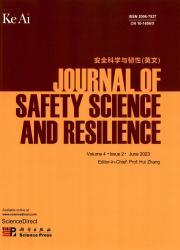A model for aircraft cabin evacuation considering passenger type
Abstract
Pedestrian safety evacuation in aircraft cabins has been a challenging problem because of the aircraft's unique characteristics, such as the diversity of passengers and the restricted evacuation environment. It is difficult to reproduce evacuation activities in aircraft cabin due to safety concerns and cost constraints. To fill this gap, an improved cellular automaton model of crowd evacuation for aircraft cabin is established by incorporating the characteristics of cabin space structures and passenger attributes. Passengers are divided into healthy individual passengers and disabled-healthy group passengers, whose movement mechanisms are quantified. Based on the constructed model, simulation experiments are conducted using the configuration cabin layout of B737-800 as an example. The results show that the evacuation time is prolonged with increased passenger density and the number of disabled passengers. Moreover, the overall evacuation time is insignificantly affected by whether disabled-healthy group passengers' seats are close to the aisle or window, and the evacuation efficiency is best when their seats are evenly distributed in the cabin. The evacuation time is the shortest when all cabin doors are open, and pedestrians are evacuated the slowest when the central emergency doors are closed. This study provides valuable insights into effective strategies for pedestrian evacuation and crowd emergency management of civil aircraft.

 求助内容:
求助内容: 应助结果提醒方式:
应助结果提醒方式:


